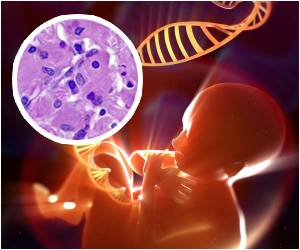Two variants of a single gene account for over 38% of the variability in skin color in the Indian population.

They have established a genetic link to color difference.
The CCMB team led by senior scientist Dr Kumarasamy Thangaraj in collaboration with Estonian Biocentre, Estonia, and five other research institutes carried out extensive skin survey of about a thousand individuals from across 27 populations to arrive at the fact that it is genetics that determine the skin color.
The research study was published in the latest issue of The Journal of Investigative Dermatology.
"We have done extensive epidemiological survey of 1167 individuals belonging to 27 populations and quantified melanin content at most exposed and low exposed area of human body at the middle region of Gangatic plains (Uttar Pradesh and Bihar), and selected 374 individuals for the first round of genetic study", said Dr Anshuman Mishra, the first author of the study.
According to the researchers, there is a gene called SLC24A5 that is known to make skin lighter.
Advertisement
The research team analyzed the entire gene and found another variant (rs2470102), which contributes to skin pigmentation variation in Indian subcontinent.
Advertisement
Further analyses revealed that both the variants (rs2470102 and rs1426654, discovered earlier) together could better explain the variation in skin color among Indian populations than considering each variant independently.
The team also found that social structure defined by the caste system has a "profound influence on skin pigmentation".
The skin color was found to vary significantly among ethnic groups and social categories studied.
The researchers then compared the skin color (phenotype) with the genetic variation (genotype) of the individuals.
Those with combination of homozygous (similar) mutant alleles of the new and know SNP had fairer skin. They are said to belong to the H1 haplotype. The frequency of the H1 haplotype was far higher (96%) in people with lighter skin than in darker skin (37%).
"Our study clearly reflects the profound influence of the strict marriage patterns and multi-layered endogamy adding further to the variation in skin color contributing to the mosaic of skin tones" says Chandana Basu, one of the researchers.
With regard to the caste-color concept, the team also studied 1,825 individuals belonging to 52 diverse populations across India.
It found that, social category and associated SNPs (single nucleotide polymorphism) explain 38.4% of the variation in skin color.
Unlike Africans and Europeans, Indians do not have homogeneous skin color throughout the country. This could be due to different waves of human migration into India and recent admixture of all Indian populations, adds Dr. Thangaraj.
"This is yet another effort of CSIR-CCMB in the field of genomics, which helped us in understanding the genetic link to the skin color," said Dr. Rakesh Mishra, Director, Centre for Cellular and Molecular Biology.
These are steps that point to the era of personalized medicine based on link of genomic features with disease susceptibility and drug response.
Such studies, at very large scales, will be needed to establish individual specific lifestyle advisory and medical prescriptions as it is clear that "one size does not suit all" is also applicable to the area of human health and diseass.
Source-Medindia












